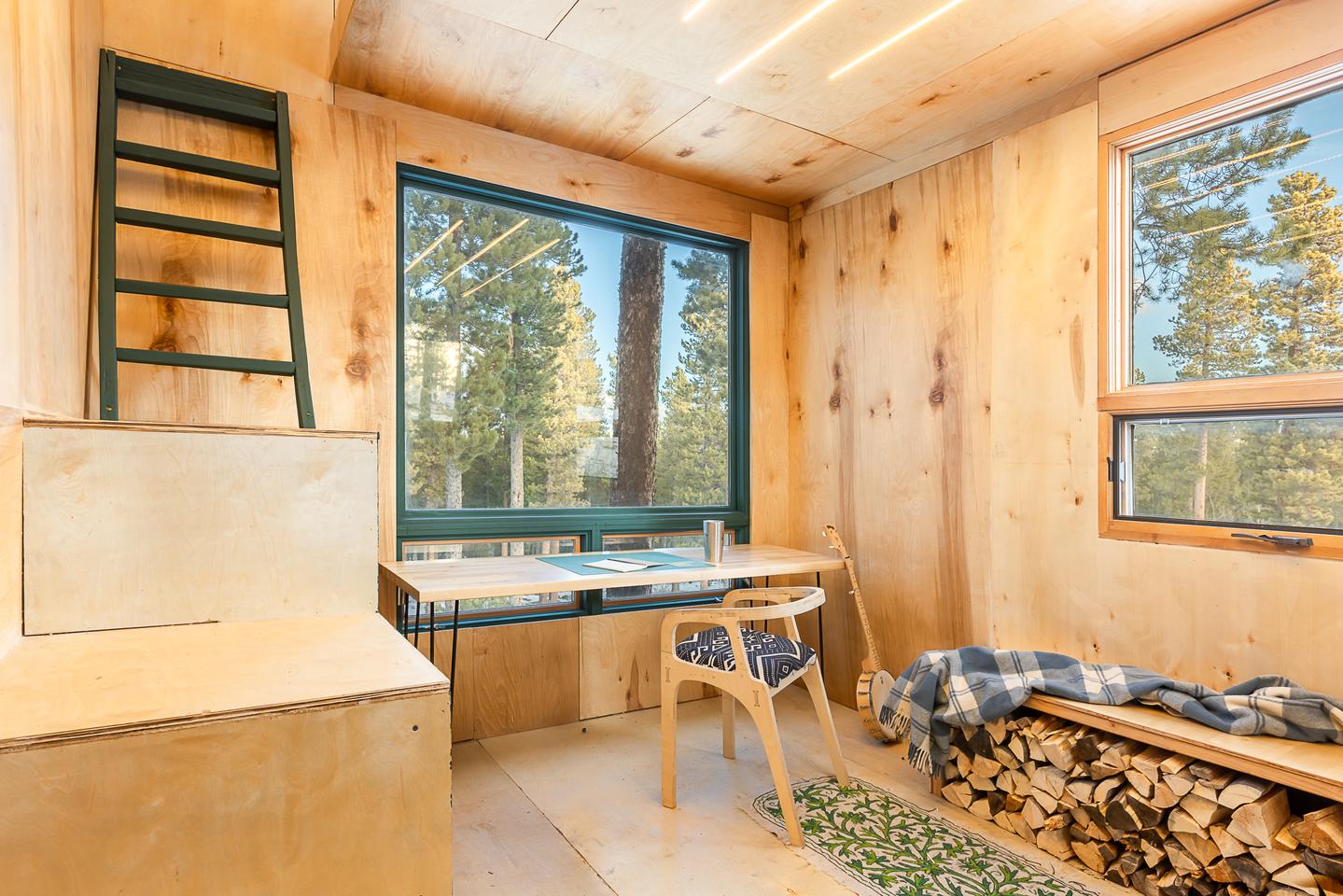Architect Michael Quirk designed this charmingly simple micro-cabin to demonstrate the efficacy of sustainable building practices. Named the Magnolia Eco-Cabin, it was built with locally sourced and recycled materials and runs off-the-grid with solar power.
The cabin measures 120 sq ft (11 sq m) and is situated in a forest in Nederland, Colorado. Quirk came up with the idea for the design while serving on the Colorado Green Building Guild board.
“The carbon negative, eco tiny home was an idea that I came up with while on the Colorado Green Building Guild board, to highlight some of our members who are building material suppliers and also carbon negative/net zero energy building techniques,” he told us. “The cabin is successful in sequestering carbon through the organic nature of the materials used to build it.”
The cabin is finished in a mixture of locally sourced birch plywood, reused treated cedar shiplap siding, and some pine wood siding that was charred using the Japanese Shou Sugi Ban method to protect and preserve it. Quirk also used some metal panels that he had left over from other architecture projects. The doors and windows are reused too. The insulation is made up of a mixture of hemp wool and hempcrete.

Michael Deleon
The interior of the cabin is very basic and consists of just two rooms, which are spread over two floors. It looks very cosy in there and the downstairs is taken up by a firewood storage area, a wood-burning stove for warmth, plus a dining/work table with a chair next to the window that overlooks a nice view of the forest.
Some storage-integrated steps and a small ladder provide access to the Magnolia Eco-Cabin’s sole bedroom. This is much like a typical tiny house bedroom and features a low ceiling and glazing, plus a double bed.
The roof-based solar panel array is hooked up to batteries to keep the power on when the sun is not shining. However, the cabin lacks running water, and doesn’t have a bathroom or kitchen, so the dwelling is probably best thought of as a weekend getaway, rather than a full-time home.
Source: Michael Quirk
Source of Article